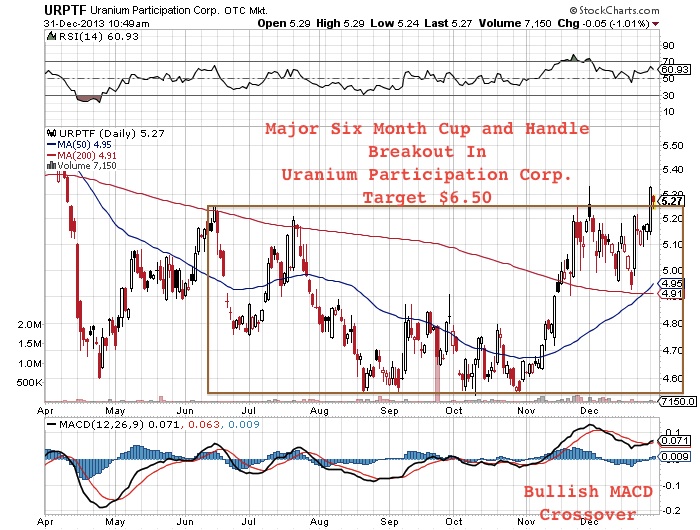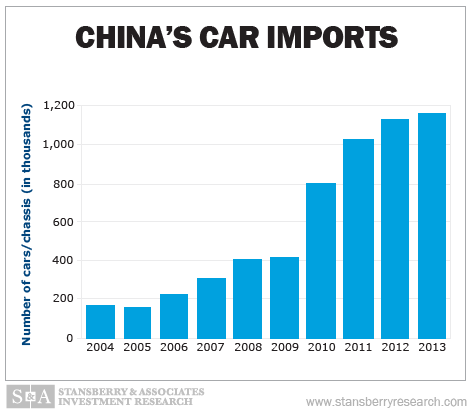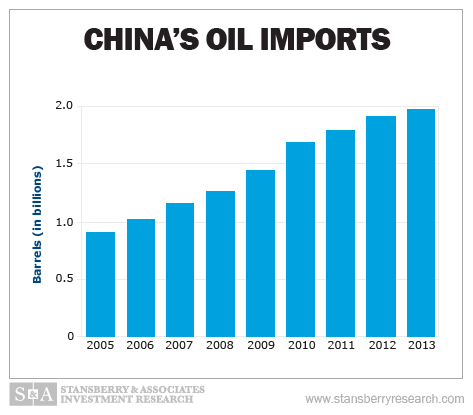 Investors who want to know how the energy sector will be doing in the coming year are, in my opinion, asking the wrong question. There really is no such thing as “the energy sector,” because the performance of the different resources—from oil and gas, to uranium, to coal, to renewables—can vary dramatically.
Investors who want to know how the energy sector will be doing in the coming year are, in my opinion, asking the wrong question. There really is no such thing as “the energy sector,” because the performance of the different resources—from oil and gas, to uranium, to coal, to renewables—can vary dramatically.
Case in point: while unconventional oil exploration and production have seen a huge upswing in recent years, thanks to the vast success of the Bakken and other oil-rich shale formations, at the same time natural gas has taken a nosedive, due to a supply glut that still hasn’t found its balancing point.
To find out which investments will deliver the greatest profits for well-positioned investors in 2014, my team and I have identified three trends that are hot… and may become even hotter in the course of this year.
HOT: Service Companies in North America
The oil and gas production in the United States is mature. Rather than looking for new basins, companies are looking to “rediscover” the past by applying new technology to increase economic production from known oil and gas fields.
This new technology comes in a variety of shapes and sizes: better software, bigger rigs, more efficient drilling processes. And it’s being applied everywhere, onshore and offshore, conventional and unconventional alike.
Just as an example, today we’re seeing operators drill more than 50 horizontal wells from a single well pad, a far cry from just a decade ago.
Exploration and production companies know that the focus moving forward is not just the amount of oil they can pump out of the ground, but the profit they can extract from every barrel (what we call the “netback”). This is even more true in the mature unconventional basins such as the Bakken, Eagle Ford, and the Marcellus shale plays, where the margins are tight and require an oil price of more than US$70 per barrel in order to be economic.
This means E&P companies have to use the best ways to increase production from every well—while at the same time reducing their drilling costs. Failure to do so would be to guarantee a firm’s demise.
The dilemma for E&P companies is having to prioritize what their shareholders want in the short term—growing production and dividends—over whatever may be best for the company in the long term. At the same time, they have to fight the natural decline of oil coming out of their wells.
All the while, service companies continue to extract fees for their tools and services. Drillers, pumpers, frackers, and other oilfield-service guys make money regardless of whether E&P companies find oil or produce it at economic rates.
We’ve said it before: Many E&P companies are running on a treadmill, and the incline is going higher and higher, which means higher costs to produce the same amount of oil.
Of course, not all service companies will rake in the dough. The ones that will do the best are the ones that can consistently stay at the forefront of technology and keep signing contracts with the supermajors like Exxon, Chevron, and Shell.
HOT: European Energy Renaissance
Russia’s grip on European energy continues to tighten, and there’s a push to produce oil and gas within their own borders all around Europe.
2014 looks to be an exciting year for companies like one of our Casey Energy Report stocks, a TSX-V-listed oil and gas explorer and producer with a 2-million-acre concession in Germany. We call the deposit it’s sitting on the “Next Bakken” because we believe that its potential to deliver exceptional output could rival that of the famed North American formation.
This development is still in its early stages, but investors who position themselves now could see outsized gains for years to come. It’s not really a question of “if” the oil is there—previous oil production in the very same location yielded more than 90 million barrels—but of “how much” oil can be extracted with the modern methods not available the last time companies worked on this field.
The company has completed its first well and will continue to drill additional wells (both vertical and horizontal) next year. While the initial well cost more than anticipated, it’s a good start that indicates economic oil can be produced in Germany. We’re also confident this company’s experienced management team is applying the lessons of its first foray to reduce drill costs on future wells.
As our Energy Report pick proves up any of its projects in 2014 and early 2015, we can expect another of our holdings, which has just entered the German oil and gas scene, to either farm into the company or even buy it out.
We predict that by the end of 2015, our “Next Bakken” play, and others like it, will have attracted a lot of attention, not just from individual speculators, but from institutional investors as well—and investors who have gotten in early will be very happy indeed.
Another of our portfolio holdings is just beginning to drill on its Romania projects after a series of delays due to politics and bureaucracy. We have reason to be optimistic because its JV partner, a Gazprom subsidiary, has drilled successful wells on the same basin on the other side of the border in Serbia. If our pick has anything close to that level of success, the markets will surely take notice and its shares will go much higher.
As the “Putinization” of the global energy markets continues and Russia’s dominance grows, European countries become increasingly more desperate to escape from under Putin’s heavy thumb and to start developing their own energy resources.
The European Energy Renaissance is real, and we continue to monitor companies that are funded and have the permits and ability to drill game-changer wells in Europe in 2014.
HOT: Uranium
During a recent trip to London, I spoke with Lady Barbara Judge, chairman emeritus of the UK Atomic Agency and an advisor to TEPCO on the Fukushima nuclear disaster in Japan. I asked her point-blank whether Japan was willing to bring any nuclear reactors back online in 2014.
Her answer was an unequivocal “Yes.” The Japanese have no choice, really, because the alternative—importing liquefied natural gas (LNG)—is far too expensive.
Japan is the world’s largest importer of LNG and has had to double its imports since the Fukushima incident. For that privilege, the country pays some of the highest rates on the planet—almost four times more than what we pay for natural gas in North America.
South Korea also shut down its nuclear plants post-Fukushima to do inspections and maintenance upgrades, and it, too, has had to import a lot of LNG. Both countries are looking to restart their nuclear reactors so they can stop paying a fortune to foreign energy suppliers. When these countries restart their reactors, they’ll also restart the uranium market, so we expect uranium prices to begin to shake loose of the doldrums this year.
Another driver will be throwing the switch at ConverDyn, the US uranium facility that is slated to start converting natural U3O8 to reactor-ready fuel in late 2014 or early 2015.
We currently hold two solid uranium companies in the portfolio—one is a US-based small-cap producer (one of the very few in America), the other is the lowest-risk way to play the uranium market that I know of. Both, we believe, will take off in 2014 on the renewed interest in uranium and the associated stocks.
If you want to know more about our thoroughly vetted energy stocks and their potential for amazing gains in 2014 and beyond, give the Casey Energy Report a try. You’ll find all my“What’s Hot” predictions and the full names of the stocks I’ve mentioned above in our January forecast issue… plus the energy sectors you should avoid like the plague this year… as well as a feature article on elephant oil deposits in the Gulf of Mexico and a new stock pickready to profit from them.
Giving the Casey Energy Report a try is risk-free because it comes with a 3-month, full money-back guarantee. If the Energy Report is not all you expected it to be, just cancel within those 3 months and get a prompt, full refund. Or cancel any time AFTER the 3 months are up for a prorated refund. Getting started is easy—just click here.





 Investors who want to know how the energy sector will be doing in the coming year are, in my opinion, asking the wrong question. There really is no such thing as “the energy sector,” because the performance of the different resources—from oil and gas, to uranium, to coal, to renewables—can vary dramatically.
Investors who want to know how the energy sector will be doing in the coming year are, in my opinion, asking the wrong question. There really is no such thing as “the energy sector,” because the performance of the different resources—from oil and gas, to uranium, to coal, to renewables—can vary dramatically.












